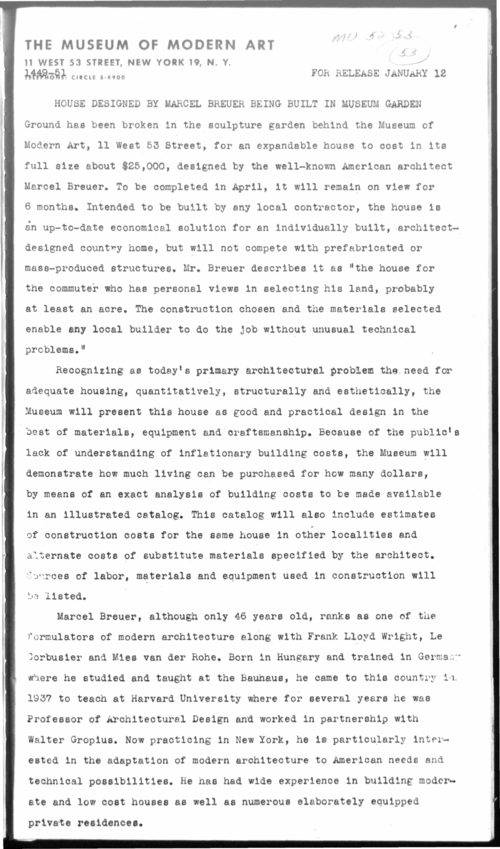|
In the 1950's, sociologists, architects and pediatricians divided the average forty-year marriage of an American couple with 2.17 children into four phases: the first two or three childless years, “the early stage”; “the crowded years,” the ten years of child-bearing; “the peak years,” (years twelve to twenty-seven), which began when the youngest child was about seven; and finally, “the later” or last fifteen years when the youngest child leaves home and the family downsizes.
FLOOR PLANS In 1950, the architect Oskar Stonorov designed a roofless full-size model of a “cutaway” house with 3-foot walls, which was displayed at Gimbels department store in Philadelphia. According to Life magazine, the exterior of the house was unimportant. It could be a “prim colonial,” simple “ranch house” or “stark modern.” The emphasis was on the interior and the criterion was to meet the changing needs of the family during the “crowded” and “peak years.” These were the years when family income was highest, and also when the family’s demand on housing facilities was at its heaviest. Stonorov’s plan was for a three-bedroom one-storey house. To simplify housekeeping and child supervision, especially when the children were young, the kitchen was combined with a playroom. The living room and dining room were out of the mainstream of house traffic. The house had a study/guest room, lots of closet space, desks and tables for studying and hobbies, radiant heat, but no basement. On the exterior, Stonorov included a carport and a terrace. Unlike Stonorov’s design, most new suburban houses were too small to accommodate formal spaces, such as a dining room. Instead they followed the formula established by Frank Lloyd Wright in his Usonian homes of the 1930s, incorporating the dining and living spaces into one open-plan room. Wright’s series of small affordable homes for the “common people” were simple one-storey structures created in response to the economic depression. By the 1950s, the open-plan living area was seen as modern and innovative, ushering in a new informal lifestyle. Like Stonorov’s “cutaway” house, the emphasis was almost always on children and their requirements. In Marcel Breuer’s “House in the Garden” exhibit at MoMA, the children had an enclosed outdoor “play yard” reached through glass doors from the “playroom” which adjoined the children’s bedroom. The floor plan was described as “expandable.” When the children were young the parents’ bedroom was next to theirs, but as they grew older, the parents could move to their own private suite in the roof area above the garage at the opposite end of the house; their room became a guest bedroom. |


